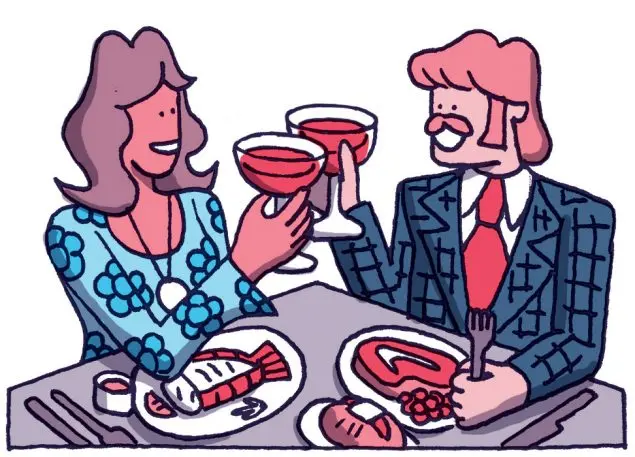It began as a mimeographed score sheet, compiling the opinions of about 200 avid restaurant-goers in New York City. A fun side project dreamed up by lawyers Tim and Nina Zagat in 1979, the guide evolved to feature pithy, compact 60-word reviews that showcased contributors’ honest and colorful remarks (”the rise and fall of Rome in a single evening”), plus numerical ratings of food, decor, and service, and the ballpark price of a meal. By the start of the aughts, more than 35 different pocket-size bibles were being printed, yielding annual revenues of more than $20 million. They made (and broke) restaurants and spawned (and killed) food trends. They boosted rising chefs and exposed the lethargy of established ones. They reshaped not only how and where people eat, but how the restaurant industry operates, channeling more power to consumers. There were even spin-off guides—for hotels, nightlife, golf courses, and movies.
The Zagat guide was more than a cultural phenomenon, however. It represented the analog birth of a disruptive idea—user-generated content—that has transformed the business landscape and continues to power such juggernauts as Amazon, Facebook, and Twitter (not to mention upstarts like Glossier, Target’s kid-inspired Studio Connect, and health companies like WebMD and Iodine). But Zagat is also a symbol of resilience. It has weathered the transition from print to digital and then mobile, the dotcom bust of 2000, the rise of blog culture, and a $151 million acquisition by Google in 2011, followed by a purchase, for an undisclosed price last March, by The Infatuation, a restaurant-review site with its own snark and social-media-based recipe for success. Recently, The Infatuation announced a $30 million investment from WndrCo, a holding company founded by Jeffrey Katzenberg, Ann Daly, and Sujay Jaswa. As this new chapter begins, insiders reflect on the early challenges, happy accidents, and surprising endurance of the brand, along with a moment that former Google executive Marissa Mayer calls “one of my biggest heartaches.”

The first guide: A surprise hit, 1963–1983
Tim Zagat and Nina Safronoff meet at Yale Law School, marry, and conceive of an entirely new kind of restaurant-reviewing system. Eaters would rate places with a 0, 1, 2, or 3 across three categories—food, decor, and service. The numbers were added up, averaged, and multiplied by 10 to get a final score between 0 and 30.
Tim: I think we started it in New York, and Nina thinks we started in Paris, but it doesn’t really matter. The end of the line was the same: We were trying to produce something that was useful, quick, and based on other people’s needs, not just our own.
Recognize your brand’s excellence by applying to this year’s Brands That Matter Awards before the early-rate deadline, May 3.
